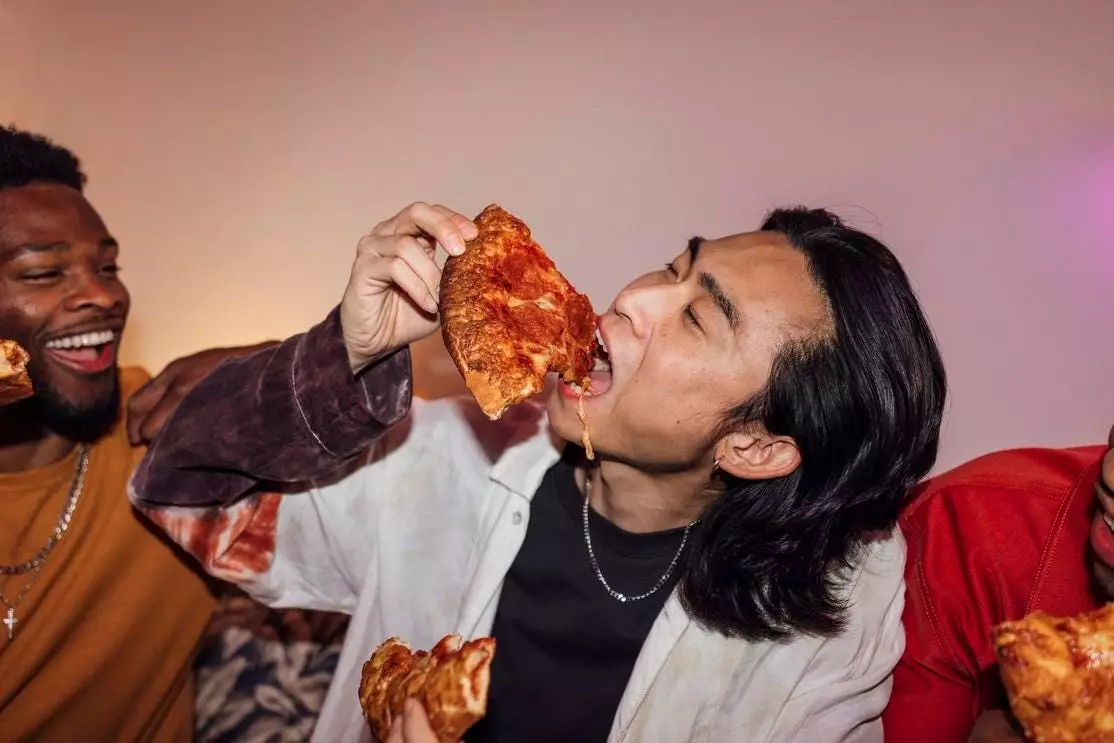The phenomenon often referred to as “the munchies” is not merely the stuff of memes; it is grounded in complex biological mechanisms that reveal the profound effects cannabis has on our appetite and food choices. Research from a 2009 study published in *Nature Neuroscience* illustrates that compounds found in cannabis, particularly THC, engage the brain’s endocannabinoid system. This system is crucial for regulating various bodily functions, and in the context of cannabis use, it amplifies our sensory experiences—specifically, our perceptions of taste and smell. When cannabis enters the equation, ordinary food transforms into an irresistible feast, often rendering typical signals of satiety ineffective.
Moreover, THC triggers the release of ghrelin, the hormone responsible for stimulating hunger. This not only amplifies the urge to eat but also encourages behaviors associated with seeking out food. The process thus transcends simple hunger; cannabis intensifies the appeal of food and rewards us for indulging, creating a cycle of craving and gratification. It blurs the lines between biological need and hedonistic pleasure, forging a connection between cannabis and culinary exploration.
The Emotional and Cultural Climate of Cravings
While the science provides a foundation for understanding the munchies, social context also plays a pivotal role in shaping what happens when we experience cravings after cannabis use. Fast forward to 2025—this landscape is characterized by instant gratification and cultural familiarity. A Tastewise survey indicates that an overwhelming 75% of Americans consume fast food at least once a week, with younger generations like Gen Z and Millennials shifting their eating habits towards convenience and comfort.
As society navigates increasing complexities in daily life, the rush for quick, emotionally satisfying meals coincides with the pervasive appeal of cannabis. Events like 4/20 have evolved from niche gatherings to mainstream celebrations, where fast food not only serves the craving but also embodies a form of emotional relief amidst modern pressures. It’s a remarkable interplay of food culture and cannabis enjoyment that creates an almost ritualistic indulgence—a means to cope with the stresses of everyday life.
Marketing Cannabinoid Appreciation
The way cannabis use is framed in public discussions and health metrics has witnessed a significant transformation. Programs like the WHO Global School-based Student Health Survey now categorize cannabis consumption alongside other lifestyle behaviors such as fast food intake and physical activity. This shift signals an acceptance of cannabis not as a taboo but as a measurable facet of contemporary behavior. As societal attitudes towards cannabis soften—spurred by reform and generational acceptance—brands are keenly observing these trends and adapting their marketing strategies accordingly.
In this new landscape, fast food chains are not simply acknowledging cannabis-centric behaviors; they are actively targeting them. Promotional campaigns are laden with playful nods to cannabis culture, often without overtly mentioning it. The approach is compelling and timely—brands are designing meals that not only satiate a physical craving but also transcend conventional advertising to resonate with a lifestyle. The intention is clear: provide comfort via indulgence during a time when consumers are more likely to seek immediate satisfaction.
The Broader Implications of the Munchies Market
As the popularity of cannabis use continues to burgeon, particularly among Millennials and Gen Z, the munchies market is expanding and evolving. Promotional items tailored to this demographic often exhibit exaggerated flavors and larger portions specifically designed to tantalize a stoned palate. Early indicators from GlobalData reveal a potential uptick in the consumption of savory snacks and high-calorie sweets, primarily driven by older millennials and Gen X rather than just the younger consumer base usually associated with such products.
The dynamic nature of the munchies market tells a compelling story—it suggests that the relationship between cannabis, appetite, and health is far more intricate than previously understood. Strikingly, studies indicate that cannabis use is not directly linked to rising obesity rates; in fact, some preliminary findings even suggest a correlation with lower instances of diabetes. This tension throws a wrench into well-discussed narratives of indulgence via cannabis consumption and invites a broader contemplation of food choices and health implications.
Cannabis users, once written off as fringe, have emerged as a significant consumer group that appears to reshape notions of indulgence. Emotional satisfaction, rather than mere caloric intake, is becoming an essential part of the discourse surrounding the munchies phenomenon. Such insights elevate the conversation beyond simplicity and into a more nuanced arena in which enjoyment, culture, and health coexist within our ever-evolving relationships with food and cannabis.


Leave a Reply